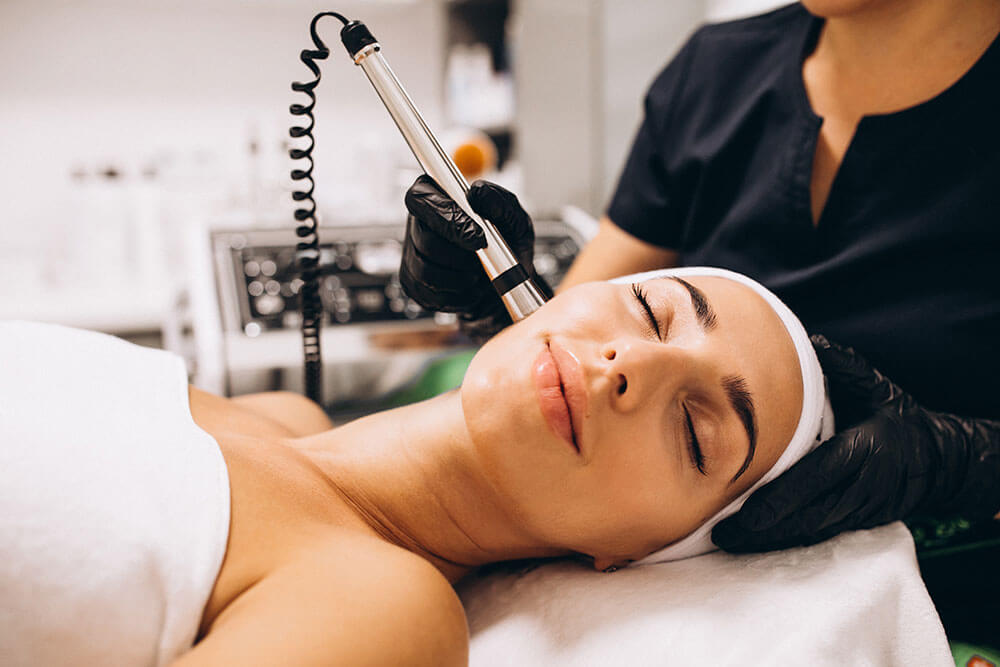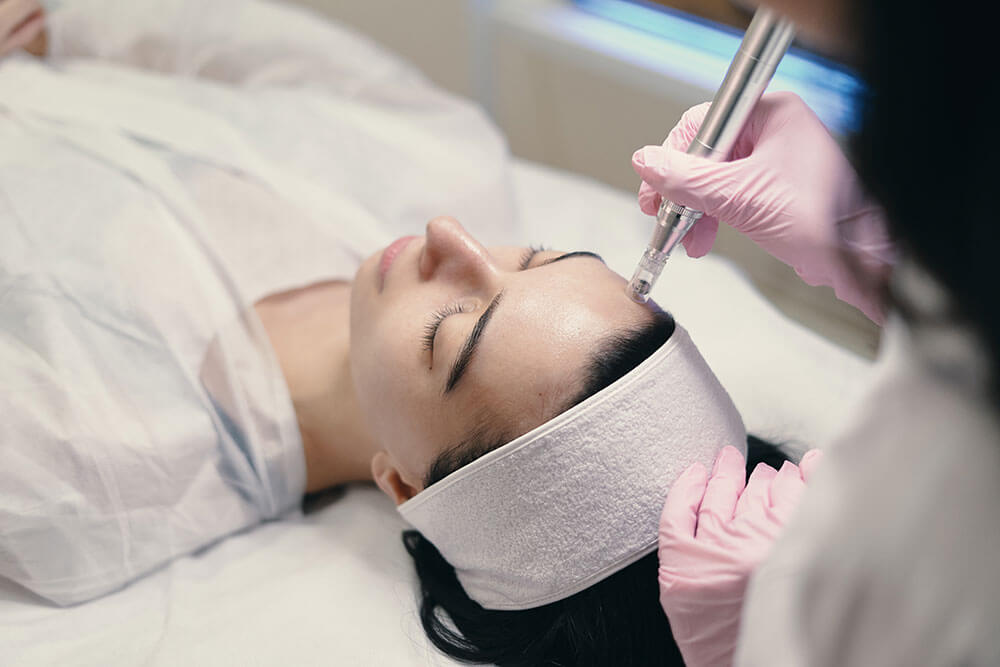1. What is Microneedling and How Does it Work?
Microneedling is a dermatological procedure that involves using tiny needles to make hundreds of tiny punctures in the skin. These tiny punctures stimulate the body’s natural healing process and promote collagen production, which helps reduce wrinkles and improve overall skin texture. It can also help reduce age spots, acne scars, large pores, and stretch marks.
Microneedling is considered safe when performed by an experienced professional who follows all safety protocols. While there may be some slight discomfort during the procedure and some redness afterward that usually goes away quickly, it is generally well tolerated by most people.
Please Read : Pink Intimate System For Dark Spot Treatment Canada
what does microneedling do for hair
Microneedling is a popular cosmetic treatment that can be used to stimulate hair growth and improve the overall health of the scalp. During a microneedling session, tiny needles are used to create microscopic punctures in the skin. These punctures trigger the body’s natural healing response, which can increase blood flow and stimulate the production of collagen and other growth factors. This can help to strengthen the hair follicles and promote healthy hair growth. Microneedling can be particularly beneficial for individuals with thinning hair, as it can help to increase hair density and improve overall hair health. It’s important to note that microneedling should be performed by a licensed professional in a sterile environment to ensure the best results and minimize the risk of infection.
what does it do for acne
Microneedling is a popular cosmetic treatment that can also be used to improve the appearance of acne-prone skin. During a microneedling session, tiny needles are used to create microscopic punctures in the skin, which can stimulate the body’s natural healing response. This response can help to reduce inflammation and promote the production of collagen, which can improve the overall texture and tone of the skin. Additionally, microneedling can help to increase the absorption of topical acne treatments, which can enhance their effectiveness. It’s important to note that while microneedling can be effective for improving the appearance of acne-prone skin, it should be performed by a licensed professional in a sterile environment to ensure the best results and minimize the risk of infection.
what does prp microneedling do
PRP (platelet-rich plasma) microneedling is a cosmetic treatment that combines microneedling with the use of the patient’s own blood platelets. During the procedure, a small sample of the patient’s blood is drawn and processed to isolate the platelets, which contain growth factors that can promote healing and tissue regeneration. The platelet-rich plasma is then applied to the skin and absorbed through the microscopic channels created by the microneedling. This can help to improve the overall texture and tone of the skin, reduce the appearance of fine lines and wrinkles, and stimulate collagen production for improved skin elasticity. Additionally, PRP microneedling can be used to treat a variety of skin conditions, including acne scars, hyperpigmentation, and uneven skin tone. It’s important to note that PRP microneedling should be performed by a licensed professional in a sterile environment to ensure the best results and minimize the risk of infection.
Procedure, And How Does It Work?
Microneedling is a dermatological procedure that involves using tiny needles to make hundreds of small punctures in the skin. These tiny punctures stimulate the body’s natural healing process and promote collagen production, which helps reduce wrinkles and improve overall skin texture. It can also help reduce age spots, acne scars, large pores, and stretch marks.
Microneedling is considered safe when performed by an experienced professional who follows all safety protocols. While there may be some slight discomfort during the procedure and some redness afterward that usually goes away quickly, it is generally well tolerated by most people.

2. What Benefits Does it Have?
Microneedling has many benefits, including:
- Reduction of wrinkles, fine lines, and other signs of aging
- Improvement in skin texture and tone
- Reduced appearance of scarring from acne or surgery
- Improved healing after laser treatments
- Enhanced product absorption for topical treatments like serums and moisturizers
- Boosting the effectiveness of other anti-aging treatments such as chemical peels or microdermabrasion
- Increased collagen production, which gives a firmer, healthier look to the skin
- Stimulating new cell growth for younger-looking skin overall.

3. What Are the Side Effects of Microneedling?
Like with any procedure, there are some potential side effects associated with microneedling. These include skin irritation and redness, swelling, slight bleeding, bruising, and infection. However, these side effects usually resolve quickly and can be minimized by following the post-treatment instructions provided by your doctor or dermatologist.
It is essential to note that microneedling should not be performed on individuals who have an active cold sore outbreak or other infections in the area being treated, as well as individuals with a history of keloid scarring or very sensitive skin.
4. When Should I Consider Receiving Microneedling Treatment?
Microneedling is suitable for all skin types and can be used to treat various skin conditions like wrinkles, scars, large pores, and uneven skin tone. Before beginning this treatment regimen, consult your doctor or dermatologist to make sure microneedling is suitable for you and any specific concerns that you have.
Microneedling treatments can produce lasting results that last up to 6 months or longer depending on individual circumstances. Many people choose regular maintenance treatments in order to keep their skin looking healthy and youthful after each treatment.

5. What Is the Cost of Microneedling Treatments?
The cost of microneedling treatments will vary depending on the location, the experience level of the doctor or technician performing the procedure, and other factors. Generally speaking, it can range from $300 to $600 per treatment session. It is important to discuss all costs associated with your microneedling treatments before proceeding with the procedure.
If you are interested in learning more about microneedling and how it can help improve the look and feel of your skin, make sure to consult an experienced skincare esthetician who can assess your individual needs and provide a personalized treatment plan for you.
6. How to Prepare for Your Microneedling Treatment?
Before your microneedling treatment, it is important to take a few steps in order to get the best results. First, you should avoid sun exposure for at least two weeks prior to your appointment and wear sunscreen with an SPF of 30 or higher during and after your treatments. You should also avoid waxing, bleaching, exfoliating, or using any harsh skin care products close to the area that is being treated.
It is also important to inform your doctor of any medications you are taking that may interfere with the procedure such as blood thinners or retinoids. Finally, make sure to follow all instructions given by your doctor regarding pre-treatment instructions and post-treatment care so that you can achieve the best results possible.

7. What Should I Expect After My Microneedling Treatment?
Immediately after your microneedling treatment, you may experience some redness and swelling in the treated area which will typically last a few hours up to 24 hours. You should also expect some mild flaking or peeling of the skin within 2-3 days following your treatment.
It is important to keep your skin hydrated during this time and avoid using any harsh products on it to ensure that the healing process goes smoothly. It is also recommended that you apply sunscreen every day in order to protect your skin from sun damage since it will be more sensitive than usual for about a week after the procedure.
Overall, microneedling is a safe and effective treatment for improving the look and feel of your skin. Be sure to consult with your doctor or skincare specialist beforehand to determine if this treatment is right for you. With proper preparation and care, microneedling can help you achieve more beautiful and youthful-looking skin.
9. Acne Scarring and Collagen Induction Therapy (Microneedling)
Acne scarring is a permanent mark or indentation on the skin (primarily the face) after severe acne. Acne scars can vary in size, shape, and color and can be shallow or deep. The body’s natural healing process causes them after an acne lesion has been inflamed and infected. When the body tries to repair the damage, it can create excess collagen, forming a scar.
There are several types of acne scars, including ice pick scars (small, deep holes), boxcar scars (broad depressions with steep, defined edges), rolling scars (broad depressions with gradual slopes), and hypertrophic or keloid scars (raised, thick scars).
Acne scarring can significantly affect a person’s self-esteem and quality of life, as it can be difficult to conceal with makeup. It may make them feel self-conscious about their appearance. Several treatments are available for acne scarring, including laser therapy, chemical peels, dermabrasion, and microneedling.
Microneedling is a minimally invasive cosmetic procedure that can be used to treat acne scarring. During the procedure, a device containing tiny needles is used to create microscopic punctures in the skin, stimulating the body’s natural healing process and promoting collagen and elastin production.
The new collagen and elastin fibers smooth out the appearance of acne scars reduce their size and depth and improve the skin’s overall texture and tone. The operation is usually done in a dermatologist’s clinic or a medical spa; topical numbing lotion may alleviate any discomfort.
Microneedling is a safe and efficient treatment for acne scars; however, it may not be suitable for everyone. People who have active acne, open wounds, or a history of keloid scarring should avoid Microneedling. Those with particular medical issues, such as a bleeding disorder or a weakened immune system, should also visit their doctor before Microneedling.
Overall, microneedling can be an effective treatment option for acne scarring. Still, discussing your options with a qualified healthcare professional is essential to determine if it is the right choice.
10. Stretch Marks and Collagen Induction Therapy (Microneedling)
Stretch marks are a type of scarring that occurs on the skin when the skin is stretched or pulled beyond its normal limits. They often appear as thin, parallel lines that have a different texture and color than the surrounding skin.
Stretch marks can occur in various body parts, but they are most commonly found on the abdomen, breasts, thighs, hips, and buttocks. They can be caused by multiple factors, including pregnancy, rapid weight gain or loss, puberty, and certain medical conditions such as Cushing and Marfan’s syndrome.
Stretch marks are not harmful and do not need medical attention, but some people may choose to treat them for cosmetic reasons. Treatment options include topical creams and lotions, laser therapy, and microdermabrasion. However, it is essential to understand that these treatments may not eliminate stretch marks, and their effectiveness can vary from person to person.
Microneedling is a cosmetic procedure involving tiny needles puncturing the skin and forming minor, controlled injuries. The purpose of microneedling is to stimulate collagen and elastin production in the skin, which can help improve its texture and appearance.
While microneedling may be effective for treating some types of scars and improving the skin’s overall texture, there is limited evidence to suggest that it can effectively reduce the appearance of stretch marks. While some studies have shown promising results, more research is needed to determine the safety and effectiveness of microneedling for treating stretch marks.
Suppose you are interested in treating stretch marks. In that case, it is best to consult with a qualified dermatologist or cosmetic surgeon to discuss your options and determine the most appropriate course of treatment based on your individual needs and concerns.
About This Article
This article is provided for educational purposes only and should not be relied upon as a replacement for medical advice or treatment. Always consult your physician before making any decisions regarding your healthcare needs.
Please be aware that those with a history of keloid scarring or sensitive skin should consult their doctor before considering microneedling treatments. While it can be safe and effective for many individuals, it may not be suitable in these cases. Furthermore, certain medications may interfere with the procedure so make sure to inform your doctor if you’re taking any blood thinners or retinoids prior to beginning microneedling treatments. Furthermore, microneedling treatments are not advised during pregnancy or breastfeeding due to potential risks involved with the procedure.
Experience the transformative power of microneedling in Richmond Hill and Toronto. Achieve smoother, firmer skin and reduce the appearance of wrinkles. Schedule your microneedling session now and uncover a more radiant you




